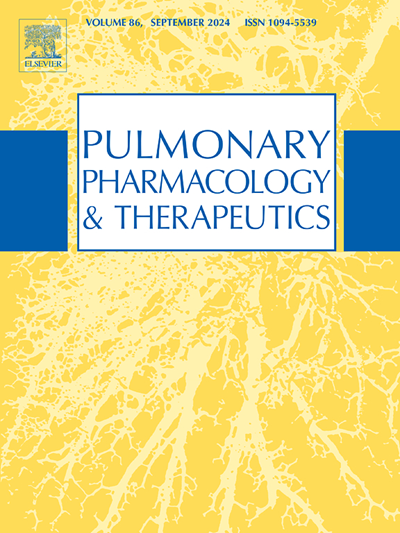A retrospective review of concurrent versus sequential administration of intrapleural tissue plasminogen activator and dornase alfa for empyemas
IF 2.8
3区 医学
Q2 PHARMACOLOGY & PHARMACY
引用次数: 0
Abstract
Background
Intrapleural tissue plasminogen activator (tPA) and dornase alfa (DNase) administered sequentially, separated by a one to 2 h interval, is a mainstay of pleural infection treatment. Recent literature supports similar efficacy and safety of concurrent therapy (administered immediately after one another). Insufficient evidence are available to utilize concurrent therapy routinely.
Objective
The primary objective of this study was to assess the safety and effectiveness of concurrent versus sequential intrapleural tPA and DNase in pleural infections.
Methods
This was a single-center, retrospective study of patients ≥18 years old admitted to the inpatient setting who received either concurrent or sequential intrapleural tPA or DNase between July 1, 2014, and January 1, 2023. The primary outcome was treatment failure, a composite of 30-day mortality and requirement for a video-assisted thoracoscopic surgery (VATS). Secondary outcomes included cumulative pleural fluid drainage, bleeding adverse events, and pain requiring analgesia dose escalation.
Results
A total of 184 patients were included: 158 patients in the concurrent group and 26 patients in the sequential group. Treatment failure was similar between groups (18.4 % vs 19.2 %, P > 0.99). Increased pleural fluid drainage occurred in the concurrent versus sequential therapy group (1453 mL vs 836 mL, P = 0.05) with no differences in bleeding (23.4 % vs 19.2 %, P = 0.64) or analgesia dose escalation between groups (41.1 % vs 23.1 %, P = 0.09).
Conclusion and Relevance
Concurrent intrapleural fibrinolytics have similar effectiveness and safety compared to sequential administration however, further investigation into the compatibility and stability of the medications is warranted to optimize future pleural infection management.
胸膜组织内纤溶酶原激活剂和多纳酶治疗积液并发与序贯应用的回顾性分析。
背景:胸膜组织纤溶酶原激活剂(tPA)和核糖核酸酶(DNase)按顺序给药,间隔1至2小时,是胸膜感染治疗的主要方法。最近的文献支持类似的疗效和安全性的同时治疗(立即给药后,另一个)。常规应用并行治疗的证据不足。目的:本研究的主要目的是评估并发与顺序胸膜内tPA和DNase治疗胸膜感染的安全性和有效性。方法:这是一项单中心、回顾性研究,纳入了2014年7月1日至2023年1月1日期间同时或顺序接受胸膜内tPA或DNase治疗的≥18岁住院患者。主要结局是治疗失败,综合30天死亡率和需要视频胸腔镜手术(VATS)。次要结局包括累积胸腔积液引流、出血不良事件和需要增加镇痛剂量的疼痛。结果:共纳入184例患者:同期组158例,序贯组26例。两组治疗失败率相似(18.4% vs 19.2%, P < 0.99)。同期治疗组与顺序治疗组相比,胸水引流增加(1453 mL vs 836 mL, P = 0.05),出血(23.4% vs 19.2%, P = 0.64)或镇痛剂量增加(41.1% vs 23.1%, P = 0.09)组间无差异。结论:与序次给药相比,同时使用胸膜内纤溶药物具有相似的有效性和安全性,然而,有必要进一步研究药物的相容性和稳定性,以优化未来胸膜感染的治疗。
本文章由计算机程序翻译,如有差异,请以英文原文为准。
求助全文
约1分钟内获得全文
求助全文
来源期刊
CiteScore
6.20
自引率
0.00%
发文量
41
审稿时长
42 days
期刊介绍:
Pulmonary Pharmacology and Therapeutics (formerly Pulmonary Pharmacology) is concerned with lung pharmacology from molecular to clinical aspects. The subject matter encompasses the major diseases of the lung including asthma, cystic fibrosis, pulmonary circulation, ARDS, carcinoma, bronchitis, emphysema and drug delivery. Laboratory and clinical research on man and animals will be considered including studies related to chemotherapy of cancer, tuberculosis and infection. In addition to original research papers the journal will include review articles and book reviews.
Research Areas Include:
• All major diseases of the lung
• Physiology
• Pathology
• Drug delivery
• Metabolism
• Pulmonary Toxicology.

 求助内容:
求助内容: 应助结果提醒方式:
应助结果提醒方式:


